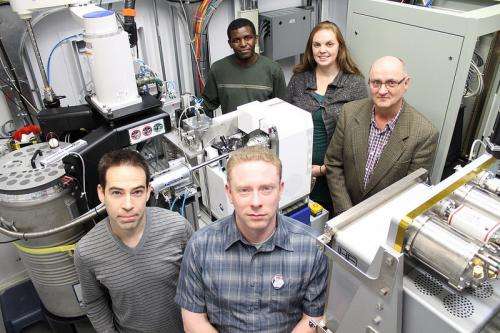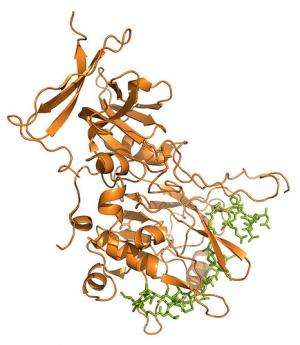Crystallography scientists celebrate 500 protein structures

The Canadian Macromolecular Crystallography Facility (CMCF) has announced the successful solution of 500 protein structures using the Canadian Light Source. The 3-D structures of proteins can be determined using powerful synchrotron X-ray light, and these structure models are deposited in the Protein Data Bank – a worldwide repository describing and showcasing proteins and other biological macromolecules. Many of these structures have been critical to the publication of 286 peer-reviewed journal articles.
The first protein structure from the CLS was obtained in 2006 on the first CMCF beamline. In 2011, a second beamline was commissioned. Since then, the number of CMCF researchers has grown to about 75 principal investigators from across Canada along with their staff and students. Several scientists from the US, as well as important commercial clients, regularly use the facility, either in person or remotely.
The excellent quality of researchers that make use of the CMCF is highlighted in several influential works published in high-impact journals such as Nature, Science and Cell. Examples include an article that recently appeared in Science describing the structure of parkin, a protein that if mutated is responsible for some types of Parkinson's disease. Detailed knowledge of this structure provides a framework for enhancing healthy parkin activity therapeutically. An article exploring invasion of host cells by parasites that cause malaria also appeared in Science. Understanding the structural features of the critical proteins involved in such processes is key to the development of effective treatments.
A Nature article explored how the human body recognizes attacking viral RNA, while another made a determination of "hot spots" on ryanodine receptor proteins that, when abnormally mutated, are involved in cardiac disease. DNA methylation is intricately involved in cell development and affects everything from cell differentiation to the development of cancer. An article in Cell reported the mechanism by which specific proteins regulate DNA methylation and control target gene expression. Such studies give researchers detailed structural information critical to our understanding of life, disease processes and, ultimately our desire to improve the human condition.
This year marks another milestone because the Protein Data Bank has now surpassed 100,000 structure entries from human, animal, plant, bacterial and viral proteins as well as nucleic acids. Over 90,000 of these structures are the result of crystallography experiments. The results from investigators using the CMCF represent a significant contribution to this important pool of knowledge that scientists use to better understand biology, environmental processes, human health, disease, and develop new pharmaceuticals.

More information:
Trempe et al., Science 340(6139), 1451-1455;
Tonkin et al., Science 333(6041), 463-467;
Abbas et al., Nature 494(7435), 60-64;
Tung et al., Nature 468(7323), 585-588;
Xu et al., Cell 151(6), 1200-1213.
Provided by Canadian Light Source





















